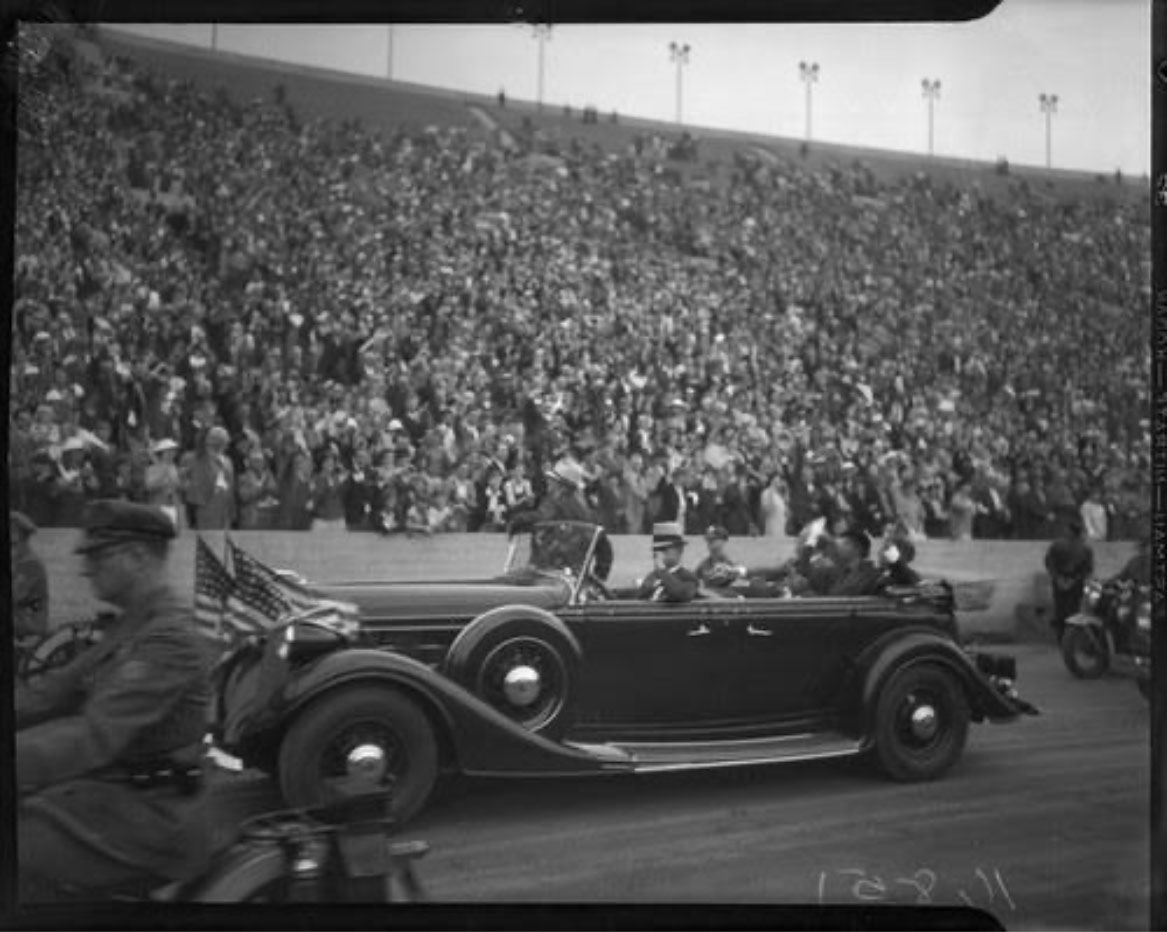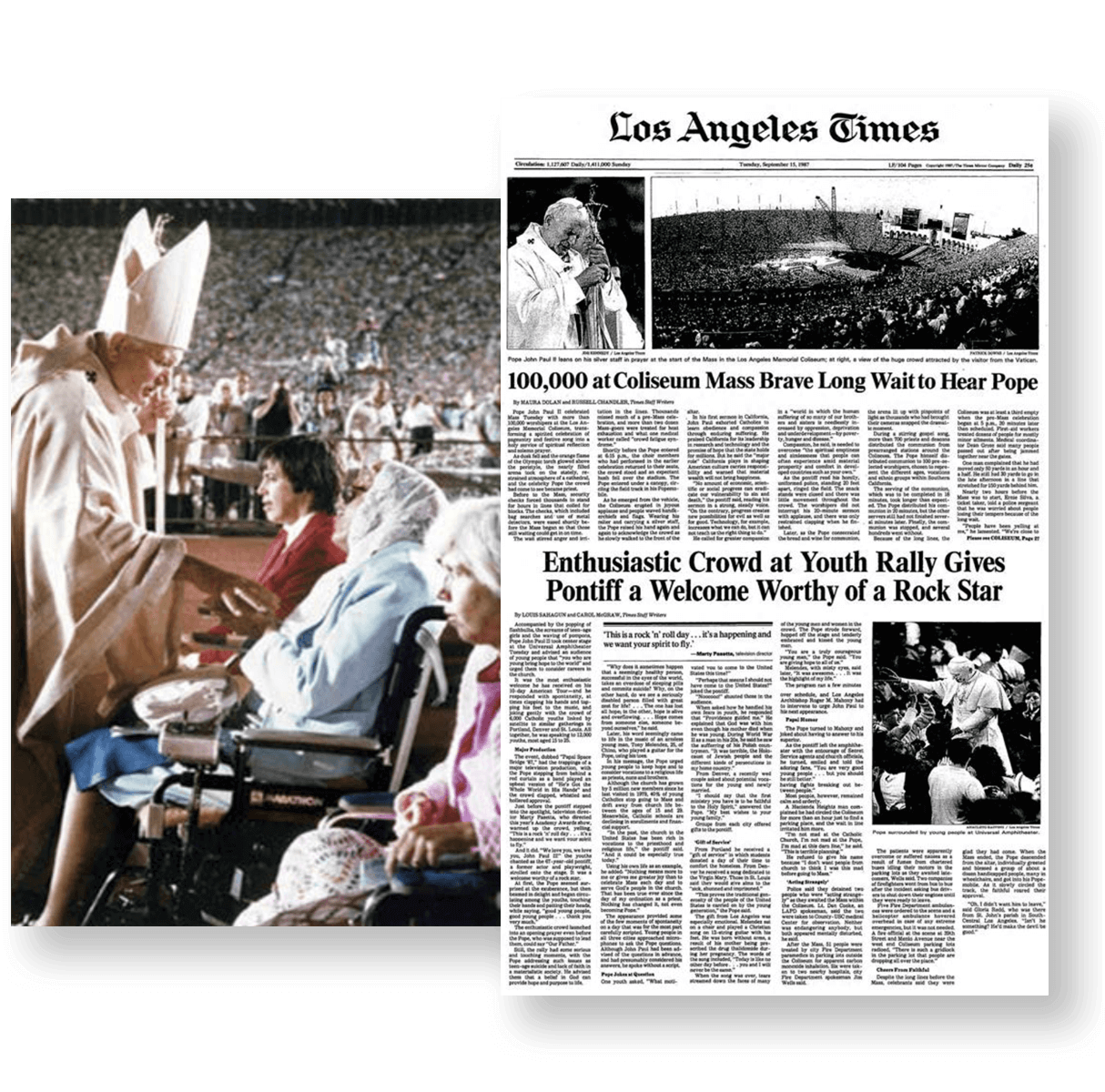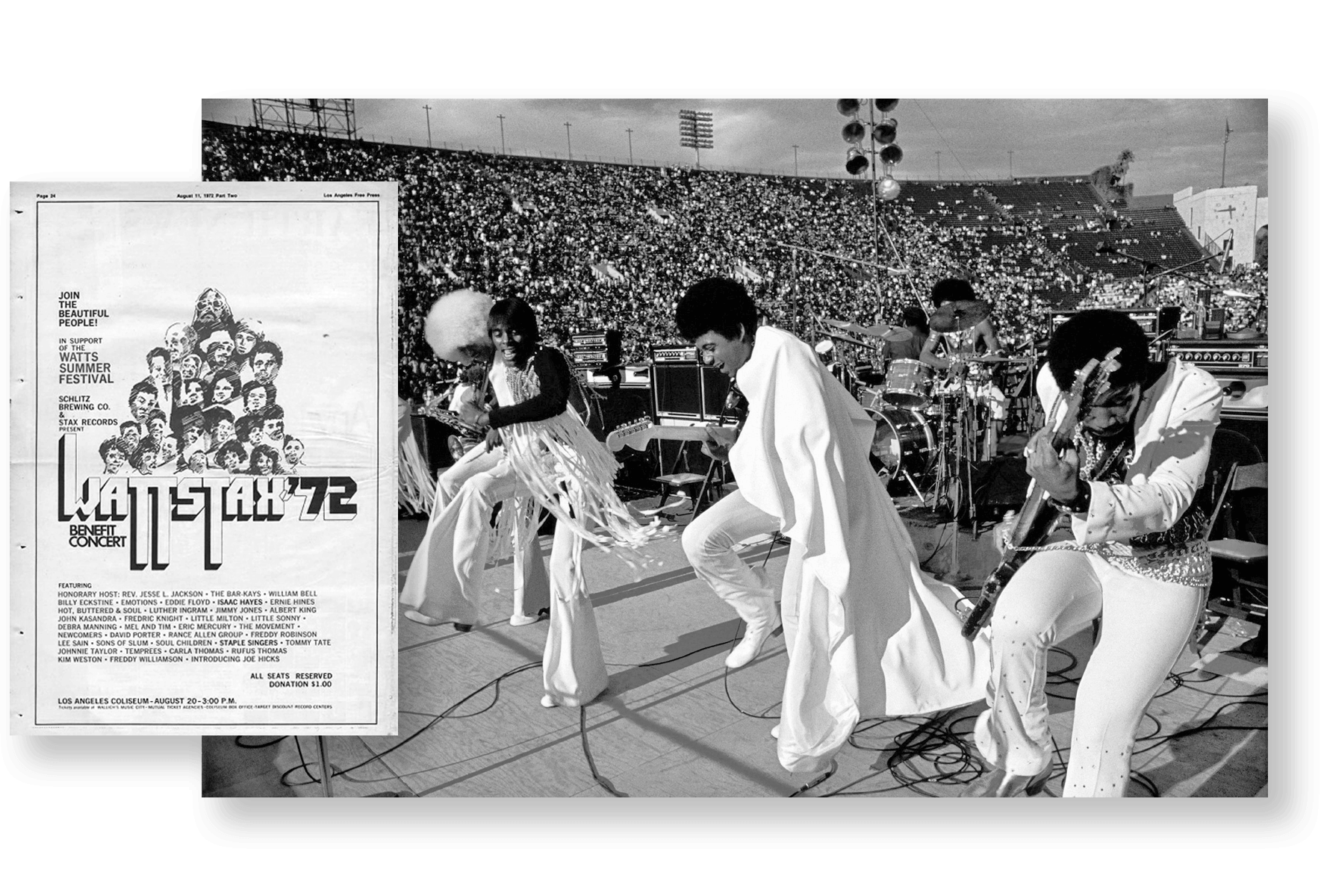May 1
1923
Coliseum Construction Completed
After breaking ground on December 21, 1921, the Coliseum's construction was completed on May 1, 1923, with a capacity of 75,000.
The Coliseum was commissioned to be built in 1921 as a memorial to Los Angeles veterans of World War I. The stadium was designed by notable local architects John and Donald Parkinson, a father-and-son architectural team. The original bowl’s preliminary construction costs were $954,873.

June 29
1990
Nelson Mandela
A short four months after being released from prison in South Africa, Nelson Mandela came to Los Angeles and spoke at a rally for freedom at the Los Angeles Coliseum. The event was sold out, attracting more than 70,000 viewers who came to listen to him speak of the suffering of South Africa’s Black majority. Musicians performed at the event, including Ice T, Babylon Warriors, Tone Loc and Kris Kristofferson among others.
As a well-known activist in the anti-apartheid movement, Mandela led the way to the end of apartheid, stopping racial division and advocating for human rights. After 27 years of imprisonment, his speech at the Coliseum was a key destination on his first trip to the United States featuring eight cities in 12 days.

April 7
1968
Martin Luther King Memorial
After Martin Luther King Jr. was assassinated in early April of 1968, the Los Angeles Memorial Coliseum hosted a memorial to remember and commemorate the unparalleled civil rights figure. Just a year after his “I Have A Dream'' speech, the Coliseum hosted the Religious Witness for Human Dignity event, at which King spoke. Just 20 days after his speech at the Coliseum, President Lyndon Johnson broke the stalemate in the senate, passing the Civil Rights Act.
Nearly 16,000 members from the community joined together within the seats of the Coliseum to honor Martin Luther King Jr.’s commitment to civil rights and his work as a political activist. The words King spoke in the coliseum about the need for justice for all members of our world still ring true today.

September 8
1963
Reverend Billy Graham Record Crusade
From August 15 through September 8, 1963, the LA community and beyond came to the Los Angeles Memorial Coliseum to listen to the religious teachings of Reverend Billy Graham. Nearly a million people (927,000) came to the Coliseum during these several weeks. On the final day of the crusades, 134,254 people filled the seats of the Coliseum and an additional 20,000 were estimated to have listened on loudspeakers in Exposition Park.
Billy Graham was one of the most influential Christian leaders, who became internationally recognized in the late 1940s. Reverend Graham hosted crusades across 185 countries over 58 years and his lifetime audience, including radio and broadcast, topped two billion.

July 15
1960
Democratic Party National Convention — John F. Kennedy Acceptance Speech
On July 15, 1960, Senator John F. Kennedy accepted his party's nomination for president at the Democratic National Convention at the Los Angeles Memorial Coliseum. His chosen running mate was Texas Senator Lyndon Johnson, and his memorable speech became known as “The New Frontier.”
In his speech, he famously said "The New Frontier of which I speak is not a set of promises - it is a set of challenges. It sums up not what I intend to offer the American people, but what I intend to ask of them."
Kennedy’s campaign was based on the separation of church and state, as well as regaining the support of Black voters for the Democratic party. The convention was one of many key moments in Coliseum history for the community to interact with political figures.

October 1
1935
Rally featuring U.S. President Franklin D. Roosevelt
During President Franklin D. Roosevelt’s first visit to Los Angeles as the President of the United States, he toured the city by motorcade. At the Los Angeles Memorial Coliseum, he addressed the crowd from his car with a speech rallying behind the “liberal spirit” of California, commemorating how “no state has a finer record in the great task of putting the strong arm of Government behind the less fortunate members of society.” The rally drew in a crowd of 70,000 people.
FDR had won the popular vote of the election with 57% of the votes and swept the electoral votes, receiving over 470. Besides the Coliseum, FDR was hosted with open arms in California, including a parade, events at the Hollywood Bowl and an evening of entertainment hosted by Jack Warner of Warner Bros, who later went on to produce movies supporting FDR’s policies.

September 15
1987
Pope John Paul II Mass
On September 15, 1987, Pope John Paul II hosted a Papal Mass at the Coliseum in front of a crowd of 103,854. There were celebrations all across Los Angeles, including a seven-mile parade route which attracted hundreds of thousands of Angelenos. In fact, the LA Unified School District canceled classes for the day.
The Mass released 500 white doves as a symbol of peace, love and new beginnings, and featured music by a choir consisting of over 1,200 singers from parishes throughout Southern California. Pope John Paul II was one of the most traveled world leaders in history, visiting 129 countries during his pontificate. His goal was to re-position and transform the Catholic Church at its core to create a new religious alliance that would bring together different religions across the globe.

August 20
1972
Wattstax ’72 Benefit Concert
Touted as the “Black Woodstock”, Wattstax brought in over 100,000 local attendees and celebrated African American culture, unity and pride within the community, which at the time was recovering from the violent Watts riots that had taken place six years earlier.
The benefit concert featured important civil rights leaders within the community, including Jesse Jackson, and performances by top recording artists, Isaac Hayes, The Staple Singers, Kim Weston, Rufus Thomas and The Soul Children.

May 31
1964
Martin Luther King Jr. Speaks at Human Dignity Event
The Los Angeles Memorial Coliseum is honored to have the late Reverend Dr. Martin Luther King Jr. as part of our legacy. We remember Dr. King's impact as an ineffable and unparalleled civil rights leader; especially during the multiple rallies Dr. King held in Exposition Park at both the Memorial Coliseum and Sports Arena.
On May 31, 1964, less than a year after his famous "I Have A Dream" speech, the Coliseum hosted the Religious Witness for Human Dignity event featuring Dr. King. In front of an audience of 14,893 supporters, and many members of the Hollywood community (including Dick Van Dyke, pictured), Dr. King addressed many topics including the Civil Rights Act, which was at that time being stalled by the Senate. Dr. King spoke about the necessity of fighting through any political impasse, which still holds true 53 years later:
“Now is the time to make real the promises of democracy. Now is the time to open the floodgates of opportunity and allow now an avalanche of justice to pour upon us. Now is the time to get rid of segregation and discrimination. Now is the time to make justice a reality for all of God’s children. This is the challenge of the hour."
Just 19 days later, President Lyndon Johnson broke the stalemate in the Senate, and the Civil Rights Act was signed into law on July 2, 1964.

September 20
1927
Colonel Charles Lindbergh
Charles Lindbergh, the hero who piloted the first trans-Atlantic flight nonstop from New York to Paris, was greeted by 60,000 admiring fans at the Los Angeles Memorial Coliseum. Colonel Lindbergh flew into LA in the "Spirit of St. Louis" air cruiser, dipping and diving to all of those in awe on the ground. Following a cheerful parade that went from First and Broadway all the way to the Coliseum, Lindbergh delivered his speech which focused on bringing awareness towards the need for air supremacy in America, with every major city opening an airport and pioneering a new world of commercial aviation.
